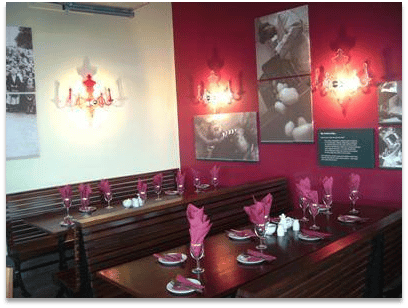The emphasis in retail outlet choice is shifting from being a point of purchase to providing interactive customer touchpoints with your brand.
The cost benefit of transacting online with your customers can often seem like a good reason not to develop or expand your retail outlet portfolio. Spiraling lease and overhead costs and the pendulum swing between out-of-town vs. in-town location choices can seem daunting particularly given the costs associated with a new store opening.
The retail outlet, however, has a key role to play in a multi-channel world but just like it’s online counterpart, the real world of bricks and mortar should be seen as a way of providing an engaging tailored customer experience rather than purely a point of purchase.
In today’s modern world where it’s the customer that chooses how to interact with your brand it could be a costly mistake not to tailor your retail experience to deliver an engaging customer experience in-store. 
Customers should experience a store as the place where all your contact channels converge to convey a unified message, preferably a message tailored to their needs or to the needs of the local store catchment. Not an easy task given the diversity present in the UK today and the centralisation of marketing and brand teams away from the individual outlets.
Simply put, customers don’t think in terms of channels. The uniformity and effectiveness of the overall brand message are therefore crucial to ensure that a company’s sales channels do not compete with one another.
When site location planning, retailers should evaluate the surroundings with regard to the catchment profile and drawing power of the unit; the shop design should enable and promote a desirable shopping experience.
Also a single ideal retail location type no longer exists. Retail network planning in today’s market place needs to distinguish between differing retail store types such as image stores, pure retail outlets and pick-up locations.
Some of the retail outlet types to consider.
Flagship stores: Full product line, maximum competency; goal: bring emotion to the brand, plant brand image in minds of customers.
Showrooms: Image-oriented stores with selected and exclusive eye-catching products for brands that deal mostly online.
Multi-channel stores: Focus is on best-selling items in the store; online offering can be ordered in store; goal: increase network density.
Pick-up stores: Offer ordered items and some universal accessories or complementary product lines; less sales area; location and accessibility are more important; goal: visibility and customer retention.
Mobile stores: Some service based businesses are already blending virtual and augmented reality with their online channels, taking the store experience directly to the customers’ living rooms providing the ultimate tailored 1-2-1 shopping experience.
Each retail store type has its own clearly defined task and profile, this must be supplemented by additional detailed considerations regarding the suitability of the sales area and location.
The key question for modern expansion planners is therefore not just, “Where is it worth opening a new retail outlet?” but “What kind of retail outlet should I be opening, why, where, what are the returns and how can I complement my existing portfolio?”
For example, flagship stores may exist in strategic locations around the country to secure the desired % market coverage and then be supported by smaller regional retail outlets tailored to penetrate strategic niche markets such as those with an ethnic bias, for example, or to offer a convenience factor in an easy to reach location.
For each of these store types, there are specific success criteria and requirements regarding locations, retail space and rental terms. Retailers should adjust and optimize branch networks as soon as possible, long-term leases can inhibit the agility of business in the face of rapidly advancing technology and ways to interact with your brand.
Customers are already at home in the multi-channel world, some stationery retailers have embraced this and blended the online with the real-world, offering an in-store experience that integrates both channels. Most, however, have not.
Customers will continue to benefit from the freedom to choose how they interact with your brand and how they purchase products. It’s a given today that retailers must implement multi-channel strategies that allow customers to select the most convenient and advantageous method of shopping for them. The difference will come when retailers complement convenience and price with a brand theatre experience where customers are engaged in a targeted and relevant way.
